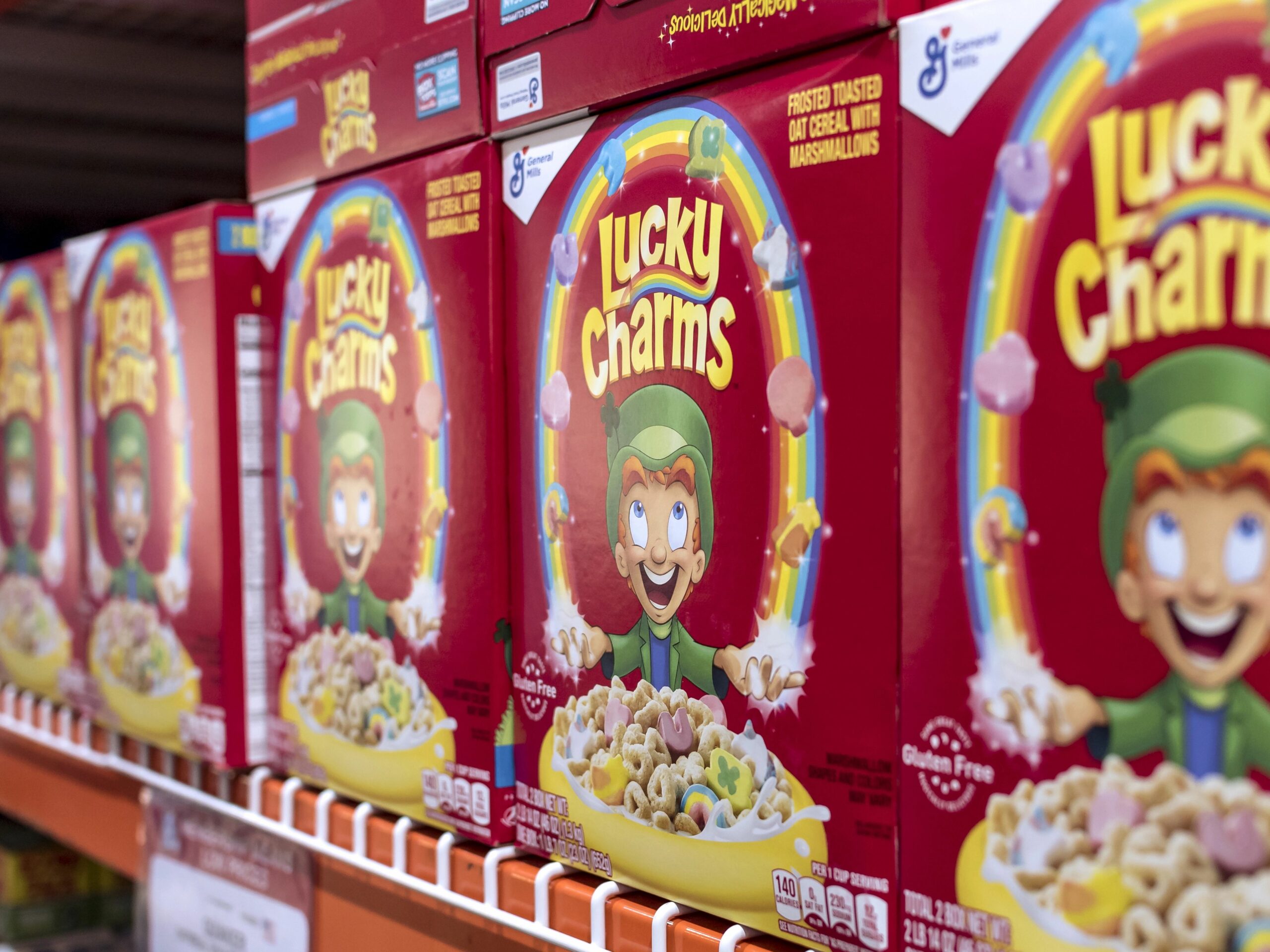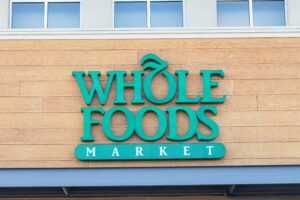
MikeEdwards/Depositphotos.com
June 18, 2025
General Mills Follows Kraft Heinz in Cutting Out Artificial Dyes: Will This Trend Continue?
Continuing in the vein of recent and related news that Kraft Heinz would be removing all artificial dyes from its expansive lineup of food items, as CNN reported, General Mills is now following suit.
According to a June 17 press release, General Mills is slated to nix all “certified colors,” or artificial dyes, from its entire product lineup by the end of 2027, with U.S. cereals and K-12 school foods transitioning sooner, by the summer of 2026. As the company indicated, the change may not significantly impact its current product mix, as 85% of its U.S. retail portfolio already avoids using artificial dyes — and “nearly all” of its K-12 school products do as well.
“Across the long arc of our history, General Mills has moved quickly to meet evolving consumer needs, and reformulating our product portfolio to remove certified colors is yet another example,” Jeff Harmening, chairman and CEO of General Mills, said.
“Today, the vast majority of our foods are made without certified colors and we’re working to ensure that will soon apply to our full portfolio. Knowing the trust families place in us, we are leading the way on removing certified colors in cereals and K-12 foods by next summer. We’re committed to continuing to make food that tastes great and is accessible to all,” Harmening added.
General Mills Follows Kraft Heinz in Removing Artificial Dyes in Aftermath of HHS/FDA ‘MAHA’ Call
Preceding the decision made by General Mills by mere hours, Kraft Heinz also signaled a similar pivot, announcing a goal to remove artificial dyes from its foods by the end of 2027 — and stating it would not introduce any new products containing those colorants in the meantime.
In its own press release published June 17, Kraft Heinz made similar comments to those later echoed by General Mills: It stated that approximately 90% of its U.S. products were already bereft of “food, drug, and cosmetic” (FD&C) colors and that it was heavily invested in a multi-pronged approach to address the remainder in advance of its self-imposed deadline.
The decision comes after Secretary Robert F. Kennedy Jr.’s Department of Health and Human Services (and subsequently, the Food and Drug Administration) published an April 22 release in which the FDA made it clear that it was moving toward a system of standards that would effectively phase out all petroleum-based synthetic dyes in American food products in a gradual transition. Beyond that, the FDA stated it was working with food producers to eliminate six FD&C colors from the U.S. food supply and would revoke authorization of the use of two others.
Texas AG Takes Credit for General Mills Decision, Says Investigation Into Kellogg’s Is Ongoing
At least one prominent political figure is taking credit for the decision made by General Mills: Texas Attorney General Ken Paxton.
On the same day that General Mills announced its removal of the aforementioned synthetic dyes, Paxton’s office released a statement indicating that he had previously issued a Civil Investigative Demand and launched an investigation into General Mills on the basis of allegedly illegal misrepresentation of its foods as “healthy” and “nutritious” despite some foodstuffs containing said dyes. Paxton claimed that in 2015, General Mills had pledged to remove artificial dyes from its products, but then the company reintroduced them after a brief period of removal.
“General Mills removing these toxic artificial dyes is an incredible win for the health of our children and all Americans. I look forward to finalizing an agreement with General Mills to ensure that this promise is kept,” Paxton said, per the release.
“Under my watch, big food companies that deceptively market their products and fill their foods with unhealthy ingredients have been put on notice that they will be held accountable for their actions. I will never back down from defending Texas consumers and will continue to stand shoulder to shoulder with President Trump and Secretary Kennedy to help Americans get healthier,” he added.
Paxton indicated that other food companies, including Kellogg’s, were also under active investigation for “similar alleged misconduct.”
Discussion Questions
Will more U.S. companies make public commitments to remove artificial dyes from their food products in the months to come? Which do you think will be next?
Do you believe the move toward natural colorants is being driven primarily by legal pressure, shifting consumer preferences, advocacy efforts, or a sense of corporate responsibility?
Will consumers be supportive of any change to product formulation in the perceived interest of overall health, or will criticism be more likely to erupt?
Poll
BrainTrust
Neil Saunders
Managing Director, GlobalData
James Tenser
Retail Tech Marketing Strategist | B2B Expert Storytelling™ Guru | President, VSN Media LLC
Brad Halverson
Principal, Clearbrand CX
Recent Discussions








Yes, I think the tide is turning – politically and from a consumer point of view. People do not want unnecessary junk in their food. European formulations of the same products do not have all the nasties, so it is perfectly possible to make food without them in the US. We will see more of this and it will, initially at least, be used as a selling point to consumers.
This trend will absolutely continue, assuming no significant change to current flavor or prices. If prices do change, there will likely be a similar bifurcation of consumers like we see today with organic vs regular produce.
Interesting to see if natural food colorants (like beet juice to make things red color) will cause any price change.
Yes, this trend will continue. MAHA.
Will more do so? Of course! Will it accomplish anything? Uhmmmm…
A more important issue, ultimately, is will this government meddling – let’s call it for what it is – do more harm than good? The dye isuue seems like not, the beef tallow fiasco, OTOH…
The FDA has been around 119 Years…
it’s the politicalization by party line that is abnormal.
FDA has been analyzing research on specific added colors for years. It is in scope of their work. E.g. they eliminated Red dye #3, and are looking into revoking Red #40.
The FDA oversees the safety of food ingredients, including those added to food and substances that come into contact with food. The FTC focuses on preventing deceptive advertising and marketing practices related to food.
This trend started well before the 2024 election, and will continue as a movement going forward, identifying and removing unhealthy ingredients, dyes, and colors from food.
One example of elevating ingredient awareness was from food health advocate Vani Hari (on X as @thefoodbabe), who in 2014 pressured Subway by petition and public outcry to remove azodicarbonamide, a bleaching agent and dough conditioner for its bread, also used in the manufacturing of yoga mats.
Consumers can decide for themselves how they want to eat, but the more information Americans have about the impact of ingredients, the better decisions they can make.
Food corporations like Kraft Heinz and General Mills may lead the charge in meeting consumer demand for natural ingredients. In order to align with consumer preferences, these companies have already reduced artificial additives and will likely continue to do so. It is also possible for smaller organic and health-focused brands to make such commitments in order to strengthen their market position.
The first-order effects suggest a sustainable trend in removing artificial dyes for CPG companies. Decisions by Kraft Heinz and General Mills are a preview of how regulatory pressure (top-down) amplifies consumers’ (bottom-up) historical concerns about FD&O colors, creating competitive advantages for those who move first. By achieving early compliance, both companies are gaining free marketing while their competitors scramble. The Texas AG’s action reveals that companies must not only navigate federal policy but also the state-level regulatory environment. Smart CPG companies can stay ahead of the complex regulatory landscape now, rather than playing catch-up in a fragmented regulatory landscape.
What is truly disgusting is that the EU banned dyes in 1995. Now, 30 years later, the U.S. reacts. U.S. food manufacturers have little to no interest in producing good food.
The only reason we are seeing this change is that the manufacturers think they can sell more without the “nasites” (per Neil). The American food supply is an embarrassment.
This might be the one place where a good conspiracist can actually have a positive impact on people’s lives. Americans have had to endure over-processed foods with necessary ingredients for generations. Consumers have had a difficult time getting accurate information about what goes into their food for roughly the same amount of time. Now the stars are aligning, between RFK Jr. and public demand, brands are reacting. As Neil Saunders points out, it’s not like this is something unprecedented; to the contrary, there are placed where governments have said no to adulterated food, and it tastes good.
This is looooonnnng overdue…
Brands know that bright colors sell, especially to children. The incentive is obvious.
Coal-tar based food dyes have long been suspect for their health risks, but a 1958 rule known as GRAS (“generally recognized as safe”) allowed food makers to incorporate many of them into products in small percentages without research affirming their safety.
Those studies (feed a huge amount to rats and see if they get sick) would be required today if a new food additive were to be introduced.
Based on third-party research I pursued as a young student, I have long believed the risks are even greater. Why? Because many food products also contain emulsifiers, like soy lecithin, which is also considered safe on its own.
Emulsifiers are mixing agents (like soaps) that help oily ingredients blend into the water-based product mix. The concern here is that oily coal-tar dyes like Red #3 are actually more available for absorption into the body when mixed into products with emulsifiers.
Food additives are seldom studied in combinations because of the inherent research confounds. So ignorance prevails. We really have no clear idea whether GRAS food dyes are innocuous or sheer poison in actual use.
Long way of saying I am very glad to hear that General Mills and Kraft/Heinz are shedding artificial colors in their products.
It’s a disgrace that some companies can make one version of their product for Europe in order to comply with European standards, and then with eyes open and full knowledge of what they are doing, continue to make a less healthy product for the USA. And our government has stood by for 30 years in the process. Must be the same branch as the one that deals with minimum wages. Makes one wonder who these politicians actually work for.
Of course. the immediacy of politicalization…
TX AG Ken Paxton… using the word “toxic” may or may not be true.
If true, then did he allow it all these years?
“General Mills removing these toxic artificial dyes is an incredible win for the health”
Yet the intense added sugar is just fine?
The words of non scientists!
Artificial dyes are the tip of the iceberg. Attorneys are beginning to file class action lawsuits against food companies for producing and marketing ultra-processed foods (“UPF”) that they argue can cause addiction and harm, especially in children. Plaintiffs will claim that the UPF industry is well aware of the harms they are causing but continue to inflict harm on society in a pursuit of profits, and that the UPF companies transferred the knowledge from the tobacco industry to design more addictive products using third-party brainresearch firms and market them to young people with the same strategies originally designed to market cigarettes.